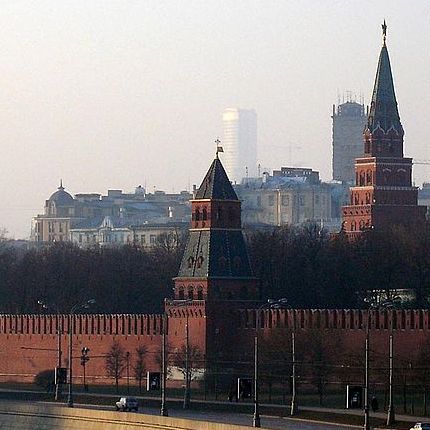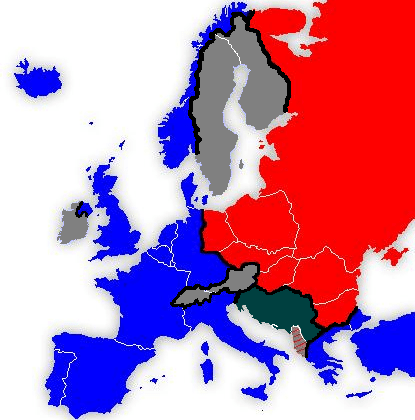(Part 2 of 2) In part 1 if this comment I discussed some of the findings of a report by Viktor Murakhovsky and Ruslan Aliev on the effectiveness of arms imports, international cooperation and technology transfer in Russia’s military industrial complex. Today, I conclude the discussion by looking at the parts of the report that examine specific examples of import deals, the risks of import dependence, and the report’s overall conclusions.
The report notes that the Russian procurement system has no way of determining the gaps in domestic procurement that have to be addressed through imports. It also has no way of choosing among alternative types of weapons systems when making foreign procurement decisions, given its lack of experience with open international tenders. Finally, it has little experience in formulating advantageous contracts with foreign defense firms through means such as offsets and joint R&D. Instead, decisions on imports are usually made because of the personal or political interests of key decision-makers in the MOD and at the highest levels of government. The report mentions a few examples:
Israeli UAVs that were purchased in 2009-10 are relatively outdated, have limited uses, and do not allow for the study and transfer of current technologies. This contradicts the stated purpose of the deal, which (in the words of former Deputy Defense Minister Popovkin were to transfer current technologies to our defense industry so that we can with their help develop our own prototypes of needed weapons and technology.”
- IVECO LMV M65 “Lynx” armored vehicles, 10 of which were purchased in 2010 for testing. A contract to build 1775 of these armored vehicles at an Oboronservis/Iveco joint venture in Voronezh was signed in 2011, without any kind of open tender being conducted. Furthermore, it was signed before testing on the vehicles was completed and without a discussion of what role the vehicle would play in Russia’s military. According to the report, the likelihood that the plan to use 50% local components in the vehicles’ construction is very doubtful because many of the components belong to other foreign firms that have not agreed to license their production to Russian firms. The contract was signed without an open competition.
- The Mistral amphibious assault ship has been criticized in Russia because Russia does not need such a ship, does not have the infrastructure to maintain the ship once it is built, and the government’s ability to finance serial production is highly uncertain. The authors argue that there is no clarity on whether Russia will get useful technology, such as the SENIT 9 tactical combat information system and the SIC-21 battle group C2 system, as part of the deal. Other components, such as the power plant, come from European advances in civilian shipbuilding and could be acquired commercially for a Russian-built ship without any problems. The most attractive feature of the Mistral for the Russian Navy is its multifunctionality; it would be highly useful for the RFN to have a ship that can serve as an all-in-one barracks, HQ, hospital, helicopter carrier, and amphibious landing ship. But there are other options for these types of ships, and a tender could have led to a more advantageous deal.
- The establishment of a training center in Mulino by the German Rheinmetall Defense Company is the one positive example of foreign procurement cited in the report. In this case, there are well-defined Russian subcontractors on board, the offsets are included in the contract, and Russian companies will benefit from the experience of technical integration by being involved in the project. (There’s no mention of open tenders here, though. I’m not sure why the authors don’t care about this factor in this one case — DPG)
The report’s final substantive section addresses the risks and benefits of dependence on imports of military technology. Risks include the possibility that the selling country will not be able or willing to supply needed parts or armaments in wartime and even blocking functionality of electronic systems and components should the purchasing side get involved in a conflict with an ally of the selling country. Excessive dependence on imports would also have negative consequences for domestic defense industry. However, if done right, imports would provide a number of benefits for Russia, including the ability to study and adopt the technical solutions used in foreign equipment, the ability to quickly fulfill the needs of the military in areas where domestic defense industry is weak, the possibility of establishing joint production of some types of equipment that could then be sold at a profit to third countries. The authors then spell out a number of factors that would allow Russia to have an effective system for importing military equipment. These include open tenders, offsets, requirements for tech transfer and local licensed production, the establishment of clear rules that apply to all decisions on import of foreign military equipment, guarantees that support for imported equipment would be provided regardless of future circumstances, and the depoliticization of future deals. They highlight three criteria for importing equipment: 1) it must be needed by the military, 2) it must not have suitable domestic analogs, and 3) it must not be critical for the military’s needs, reducing the risks of a breakdown in deliveries. Based on these criteria, the types of equipment that Russia might want to import in the near future include communications and navigation systems, aircraft engines, sniper equipment, and UAVs. France and Italy are listed as the most suitable partners, due to the qualifications of their defense enterprises and past experience in cooperation.
The report ends with a set of overall conclusions:
- The military needs to import arms and equipment because of the prevalence of outdated equipment in the military and the defense industry’s inability to produce equipment of all types.
- The import of military equipment carries significant risks for security and for the future of domestic defense industry.
- The import of military equipment must be organized so that all decisions are made according to a single set of rules, with the involvement of both the state and domestic defense industry representatives. Tenders, offsets, and guarantees of support must be part of all contracts.
- In most areas of military production, there is no need for imports. In some areas imports are needed in order to study foreign experience so as to improve future domestic production.
- Tech transfer and joint production are of greatest interest for Russia.
- Laws on the import of high tech components need to be simplified.
- The MOD must take the needs of defense industry into account in formulating its procurement and import policies, in order to ensure that defense industry capabilities are maintained and improved.
- Russian defense industry needs to be subjected to a technology audit in order to clearly formulate its problems and goals. This audit would help in formulating an import strategy.
- All import contracts need to be audited to ensure that they are financially and technically sound. Doubtful contracts should be suspended.
- Institutional imbalances between the MOD and defense industry need to be corrected.
Dmitry Gorenburg is a Senior Analyst at CNA blogging for PONARS Eurasia on military and security affairs in Russia and Eurasia. This comment is also available on Russian Military Reform.










